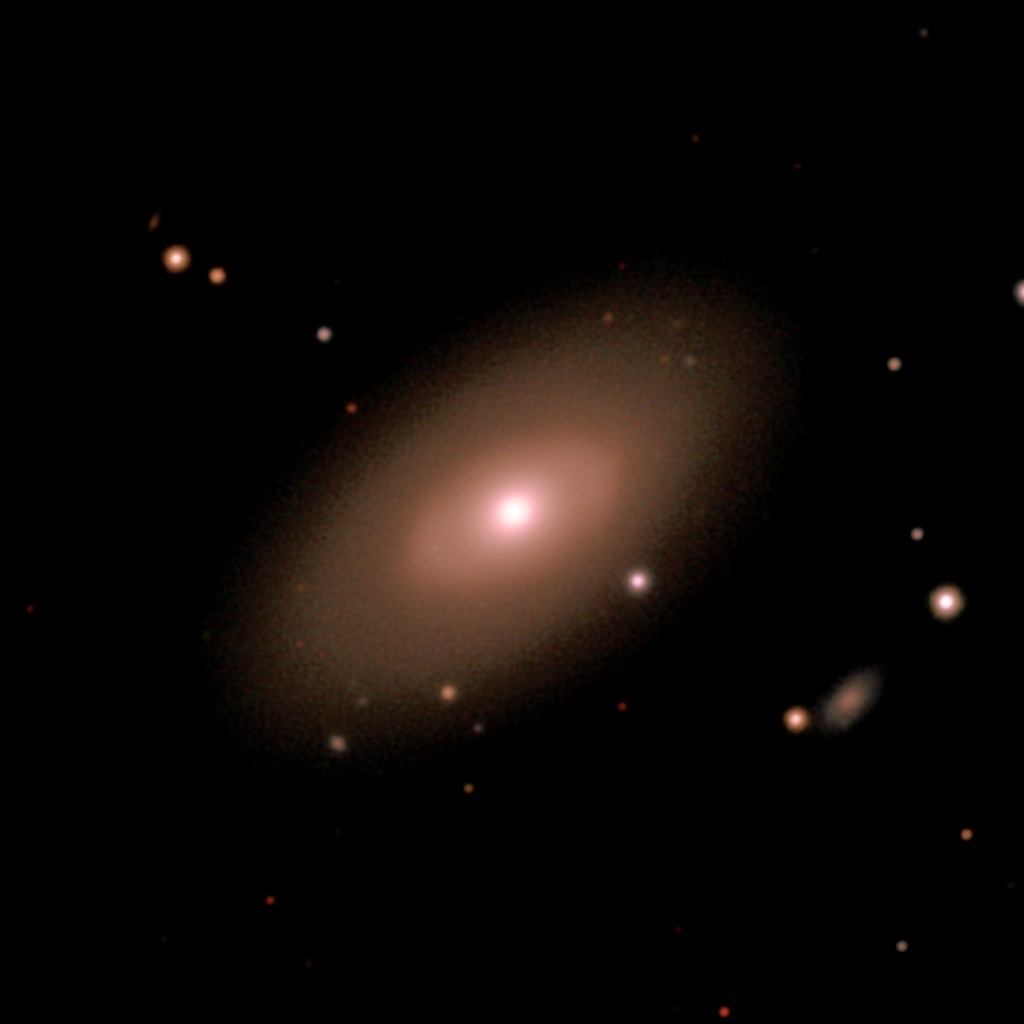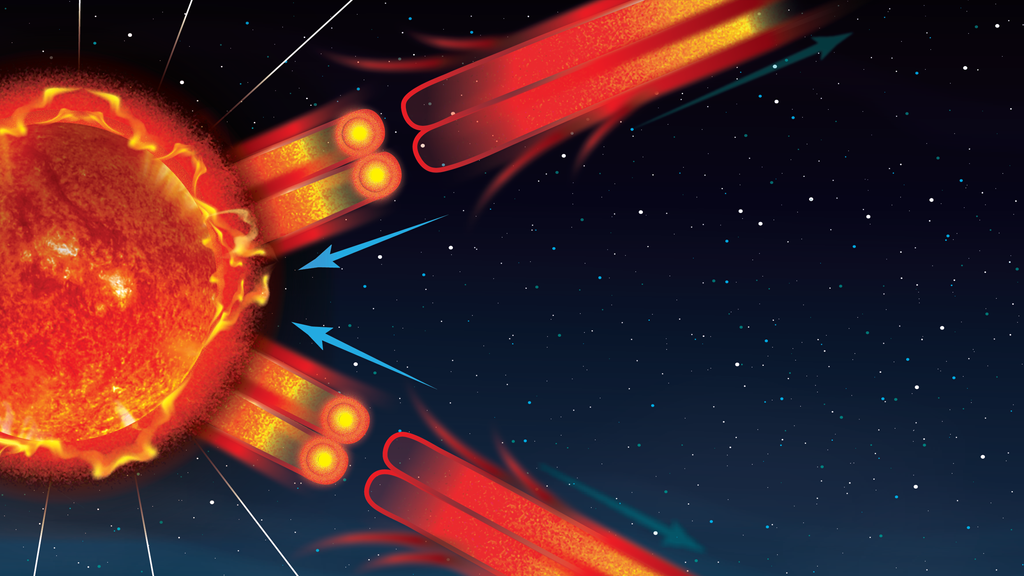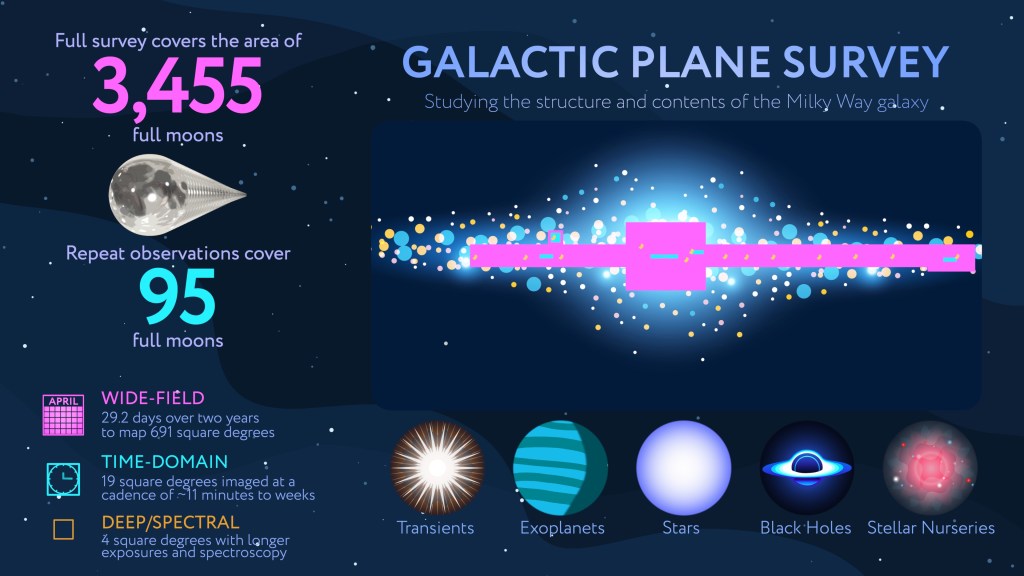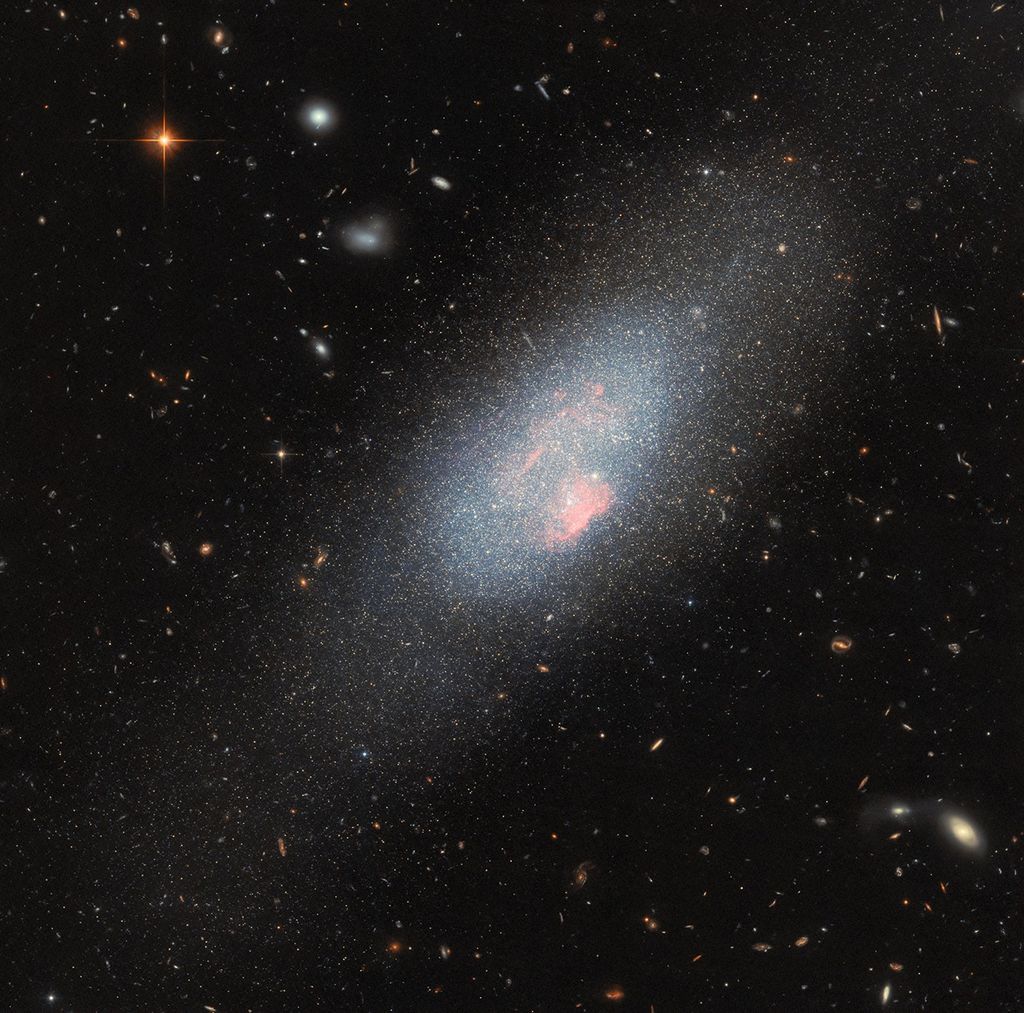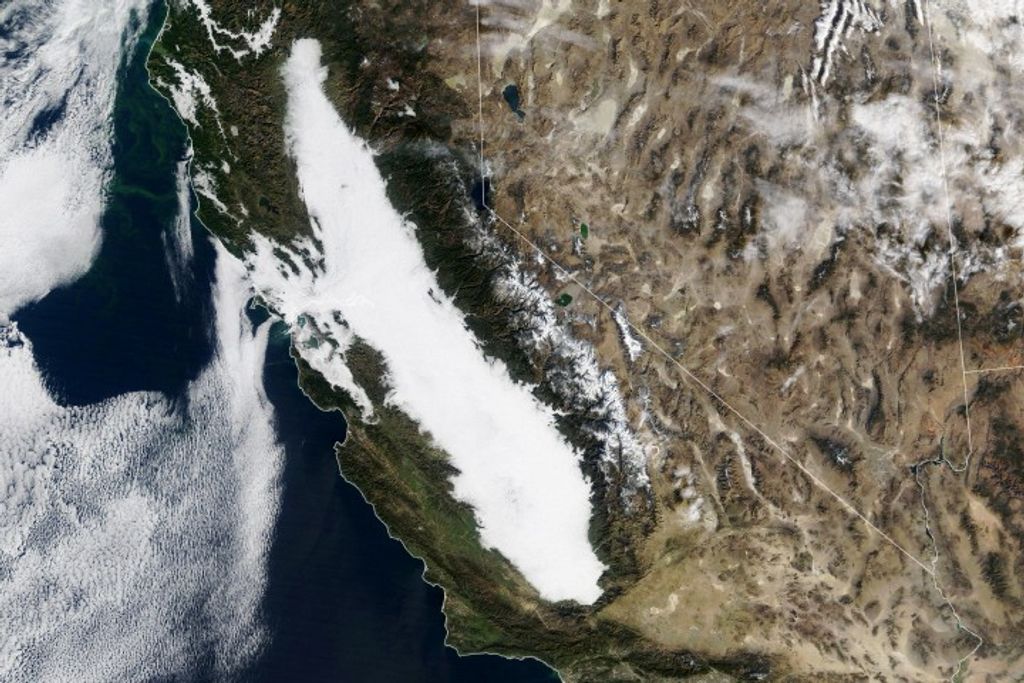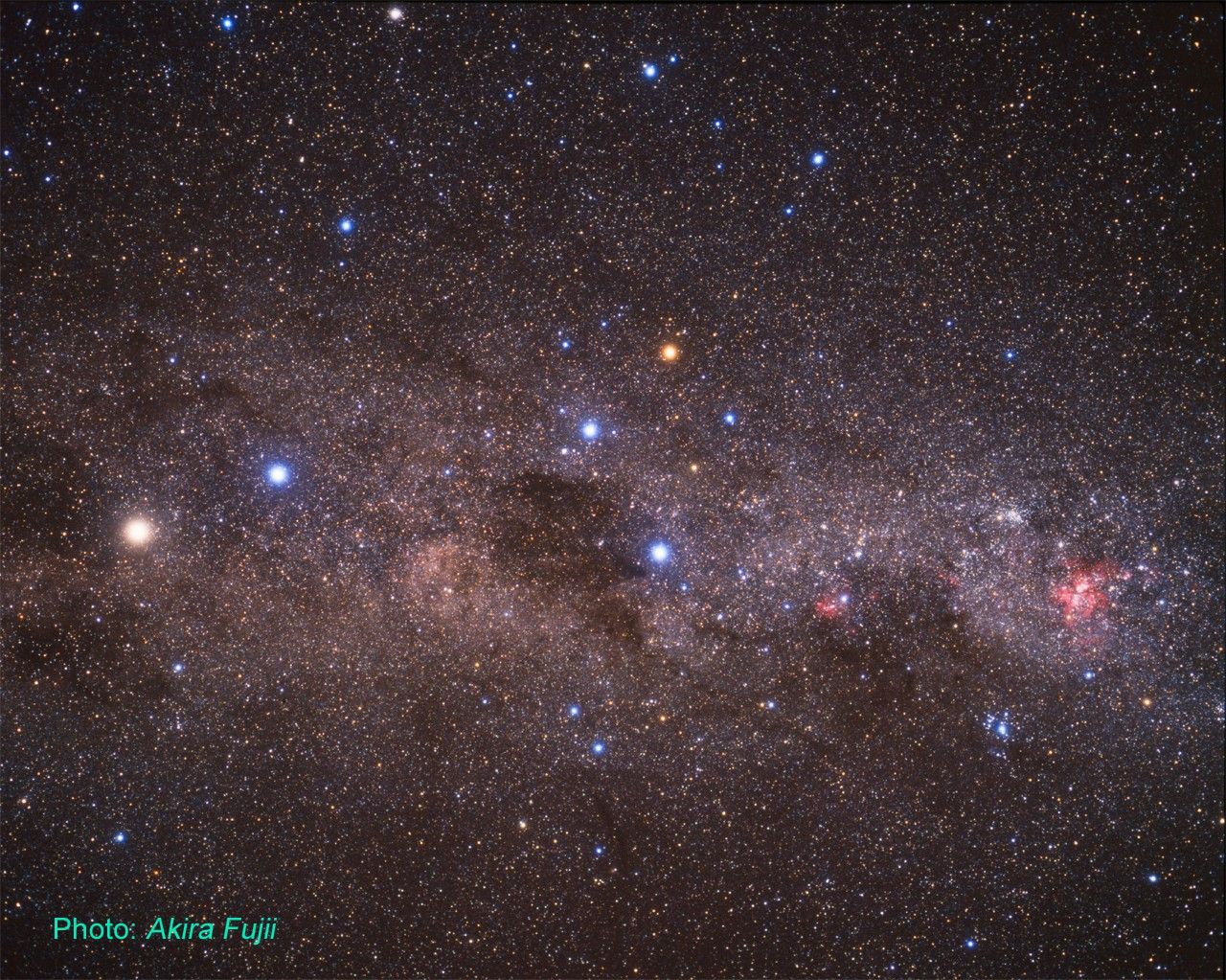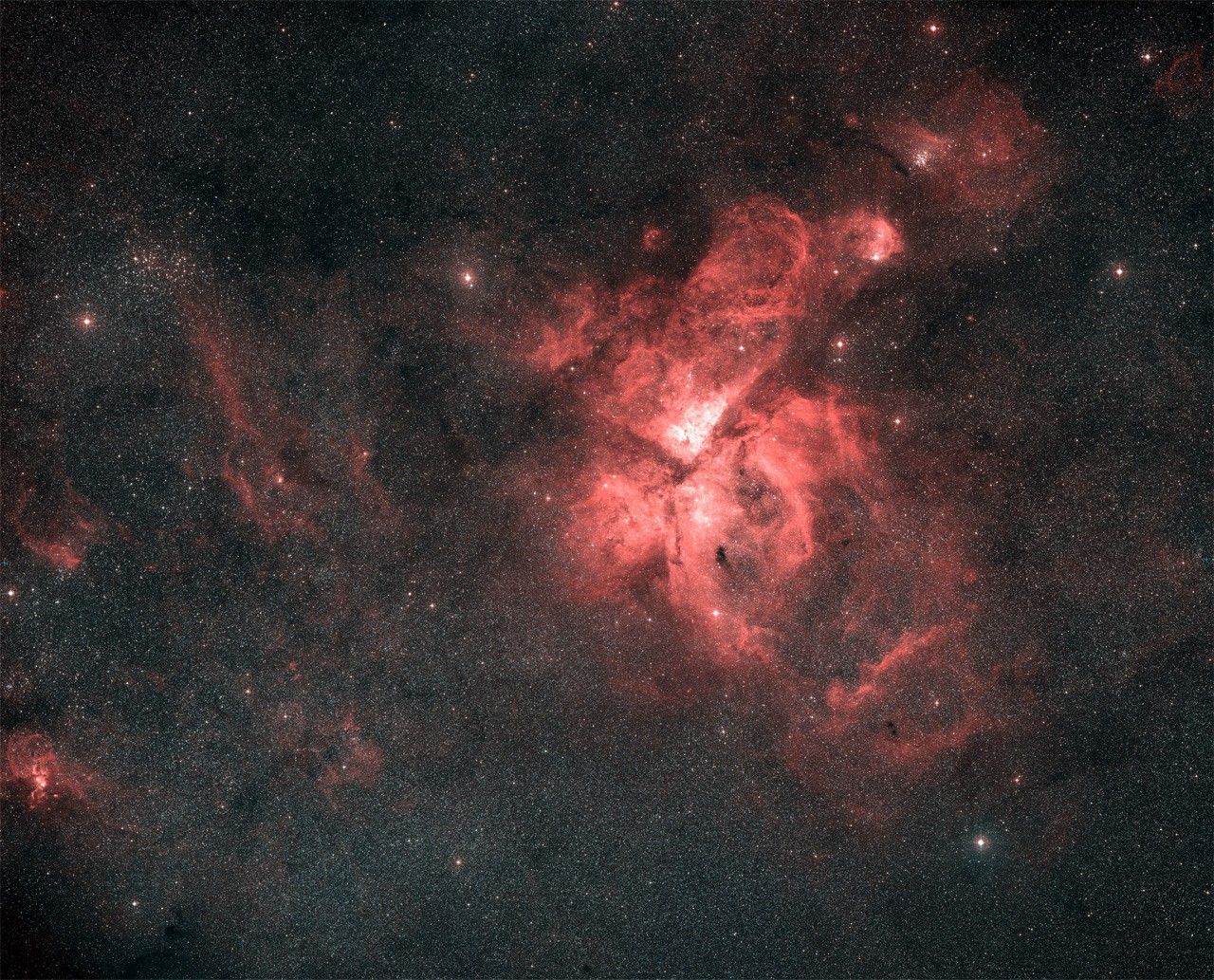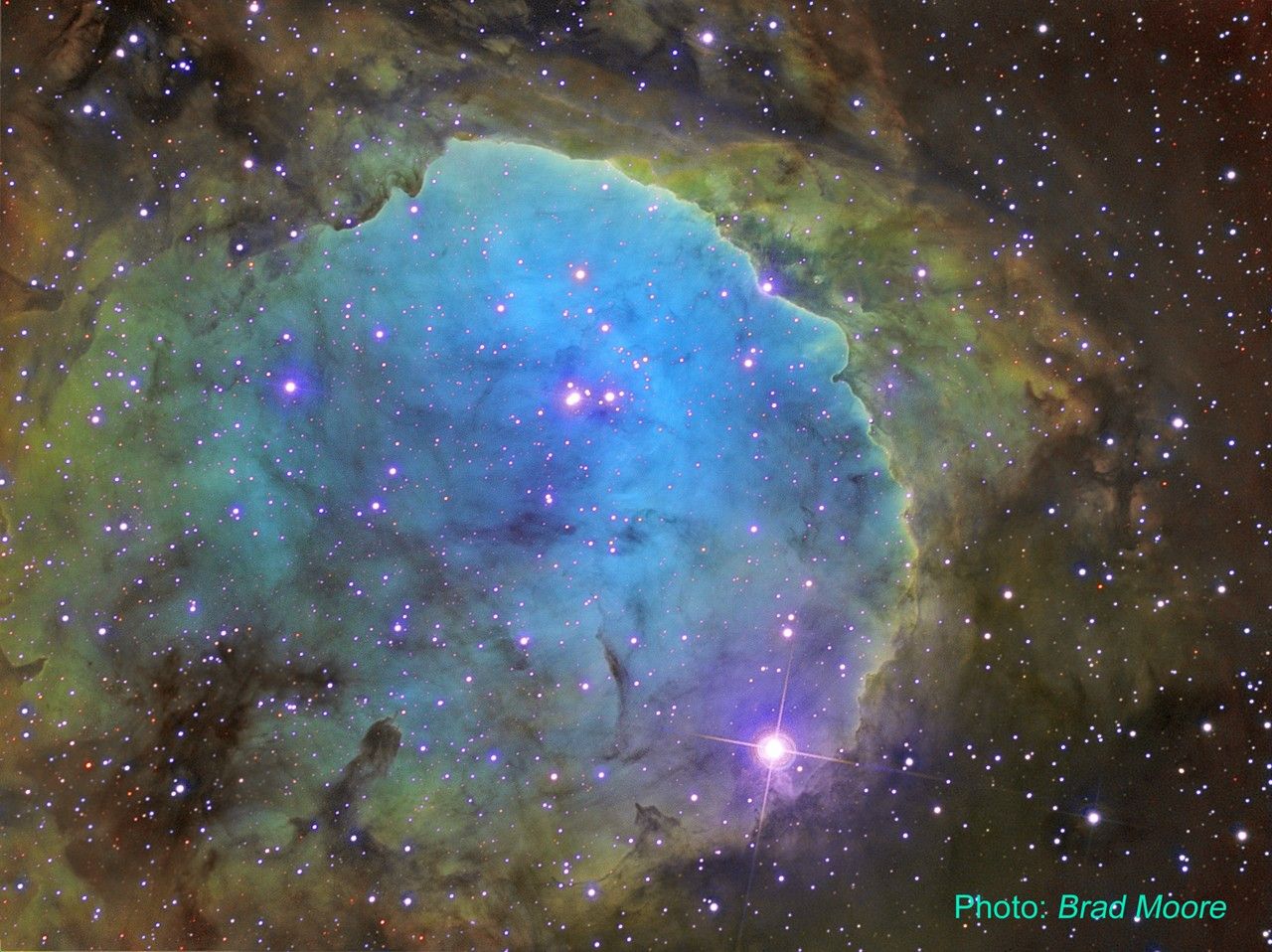1 min read
Compass and Scale Image of NGC 3324
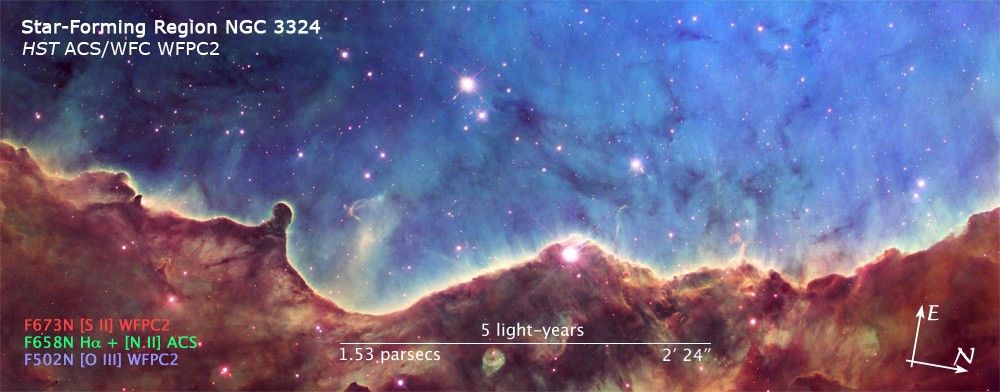
About the Object
- R.A. PositionR.A. PositionRight ascension – analogous to longitude – is one component of an object's position.10h 36m 59.0s
- Dec. PositionDec. PositionDeclination – analogous to latitude – is one component of an object's position.-58° 37' 0.0"
- ConstellationConstellationOne of 88 recognized regions of the celestial sphere in which the object appears.Carina
- DistanceDistanceThe physical distance from Earth to the astronomical object. Distances within our solar system are usually measured in Astronomical Units (AU). Distances between stars are usually measured in light-years. Interstellar distances can also be measured in parsecs.7,200 light-years (2.2 kiloparsecs)
- DimensionsDimensionsThe physical size of the object or the apparent angle it subtends on the sky.This image is roughly 6.5 arcminutes (13.4 light-years or 4.1 parsecs) wide.
About the Data
- Data DescriptionData DescriptionProposal: A description of the observations, their scientific justification, and the links to the data available in the science archive.
Science Team: The astronomers who planned the observations and analyzed the data. "PI" refers to the Principal Investigator.HST Proposal: 10475 N. Smith (University of California, Berkeley), J. Bally University of Colorado, Boulder), N. Walborn (STScI), and J. Morse (NASA Goddard Space Flight Center) and 11800: K. Noll, H. Bond, C. Christian, L. Frattare, F. Hamilton, Z. Levay, M. Mutchler, and W. Januszewski (Hubble Heritage Team/STScI), A. Bowers (Baltimore, MD) and N. Smith (University of California, Berkeley). - InstrumentInstrumentThe science instrument used to produce the data.HST>ACS/WFC and HST>WFPC2
- Exposure DatesExposure DatesThe date(s) that the telescope made its observations and the total exposure time.March 2006 and July 2008, Exposure Time: 2 hours
- FiltersFiltersThe camera filters that were used in the science observations.ACS: F658N (H-alpha+[N II]) WFPC2: F502N ([O III]) and F673N ([S II])
- Object NameObject NameA name or catalog number that astronomers use to identify an astronomical object.NGC 3324
- Object DescriptionObject DescriptionThe type of astronomical object.Star-Forming Region in the Carina Nebula
- Release DateOctober 2, 2008
- Science ReleaseA Celestial Landscape in Celebration of 10 Years of Stunning Hubble Heritage Images
- Credit

The image is a composite of separate exposures made by the ACS and WFPC2 instruments on the Hubble Space Telescope. Three filters were used to sample narrow wavelength ranges. The color results from assigning different hues (colors) to each monochromatic image. In this case, the assigned colors are: Blue: F502N ([O III]) Green: F658N (H-alpha+[N II]) Red: F673N ([S II])
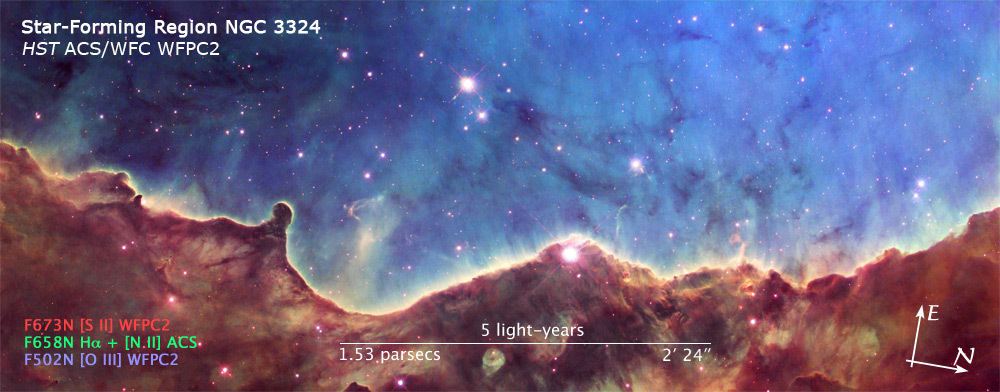
Related Images & Videos

Hubble Image of NGC 3324
The landmark 10th anniversary of the Hubble Space Telescope's Hubble Heritage Project is being celebrated with a 'landscape' image from the cosmos. Cutting across a nearby star-forming region are the "hills and valleys" of gas and dust displayed in intricate detail. Set amid a...
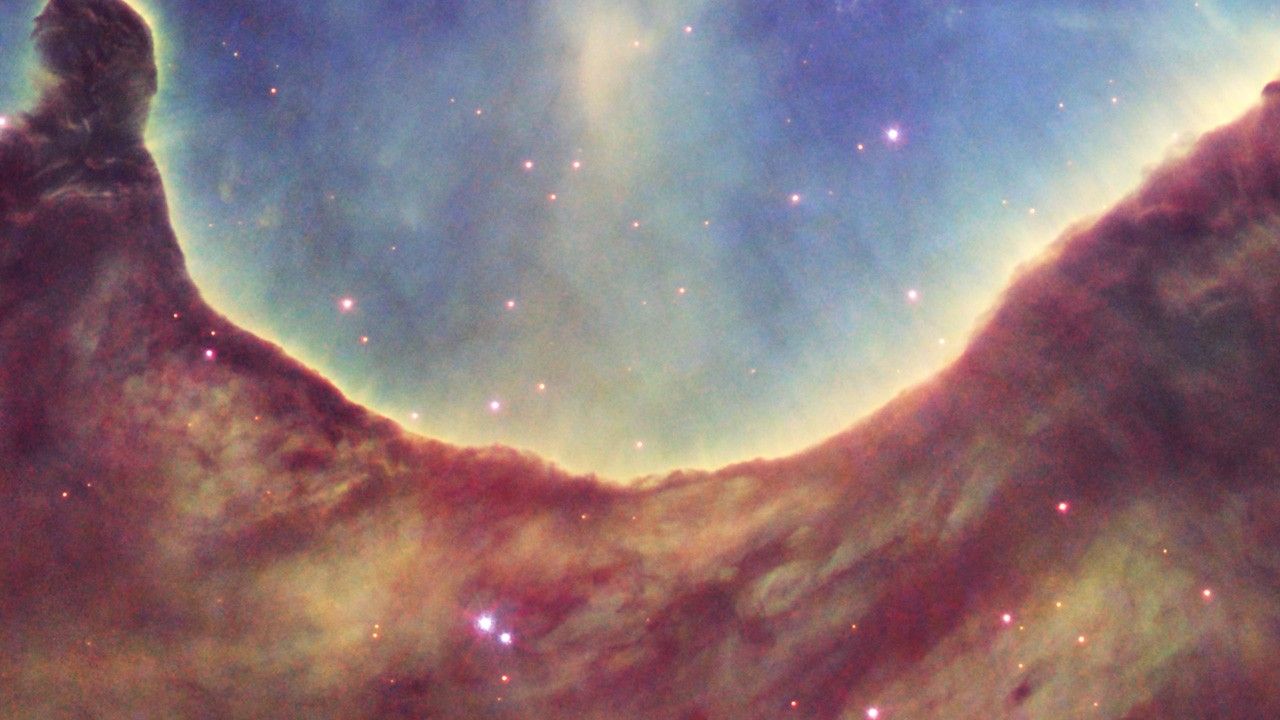
Pan Across Star-Forming Region NGC 3324 in the Carina Nebula
Panning across this star-forming region, dramatic dark towers of cool gas and dust are seen rising above a glowing wall of gas. The high-energy radiation blazing out from the hot, young stars in NGC 3324 is sculpting the wall of the nebula by slowly eroding it away. This image...
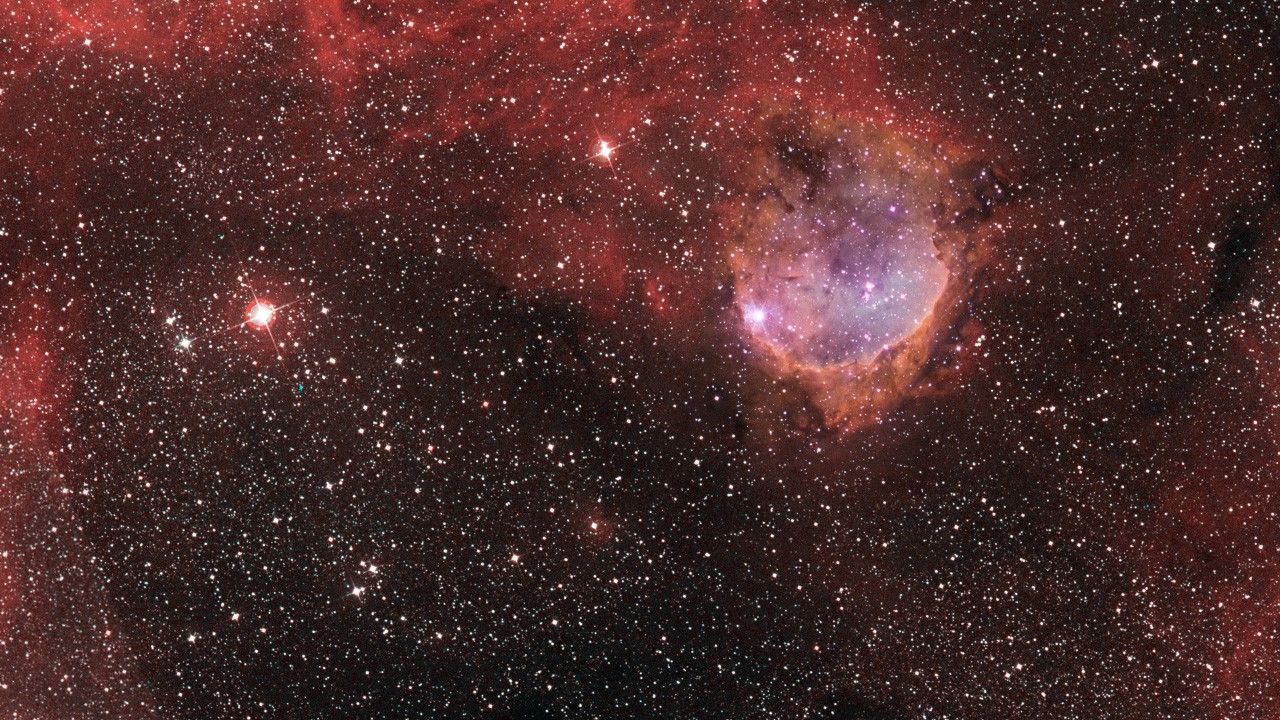
Zoom into Star-Forming Region NGC 3324 in the Carina Nebula
This zoom into the Carina Nebula starts from a photograph from the Akira Fujii collection then transitions to a Digitized Sky Survey image. A picture taken by amateur astronomer Brad Moore in Australia precedes a final image taken by the Hubble Space Telescope.
Share
Details
Claire Andreoli
NASA’s Goddard Space Flight Center
Greenbelt, Maryland
claire.andreoli@nasa.gov


